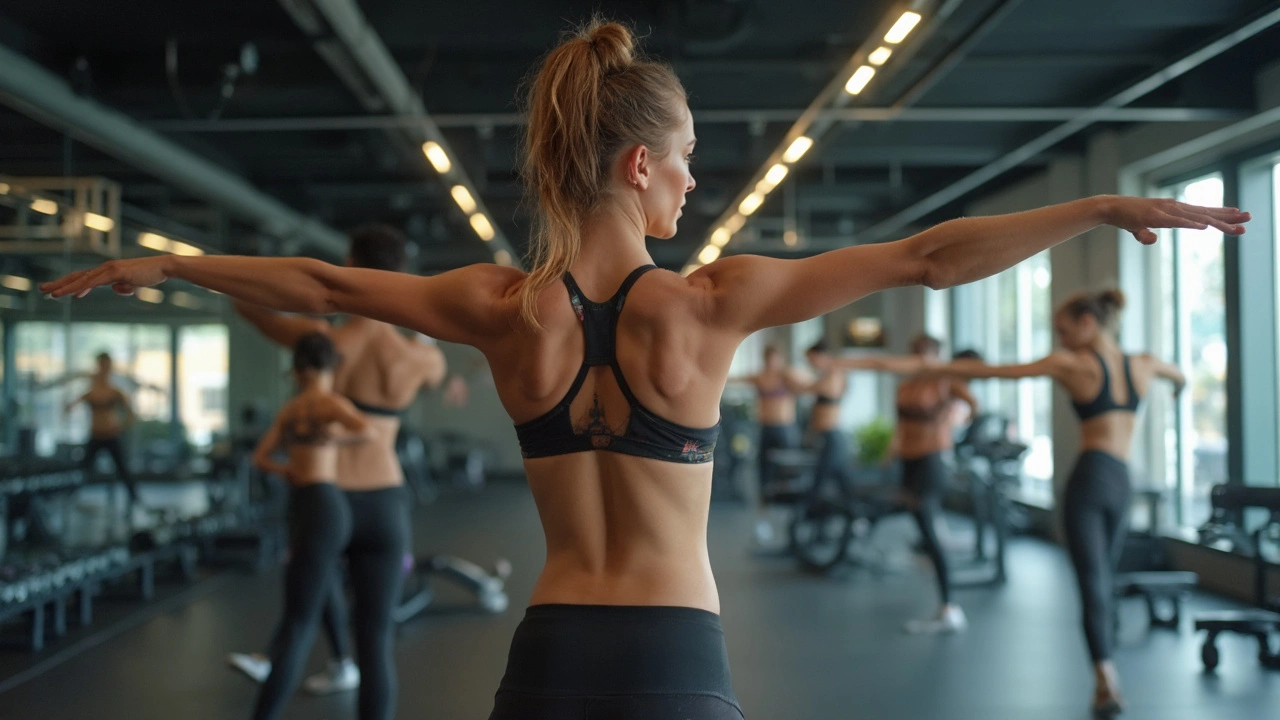Ever wonder if there's a secret sauce to keeping your muscles primed and ready for action? Well, sports massage could be just the thing. Imagine those hands doing some magic on your sore spots, and suddenly, your endurance is getting a nice little boost. Sounds good, right?
But it's not just about feeling good. Sports massage helps by getting the blood flowing a bit better in those hard-working muscles of yours, reducing that annoying tension, and even preventing injuries. It's like giving your body a pat on the back for all that hard work – and who doesn't like a little appreciation?
So, if you're thinking about giving your athletic performance a leg (or arm!) up, diving into the world of sports massage might just be your next best move. Keep reading, and we'll uncover how you can integrate it into your routine in ways that make sense for your active lifestyle.
- The Basics of Sports Massage
- How Sports Massage Improves Endurance
- The Role of Massage in Recovery
- Tips for Incorporating Sports Massage
- Frequently Asked Questions
The Basics of Sports Massage
So, what's the deal with sports massage? It's not just a fancy name thrown around in athletic circles. This type of massage focuses on helping athletes in their training and recovery by targeting specific areas that are typically put under a lot of stress. Imagine it as a
How Sports Massage Improves Endurance
You know what it's like when you're pushing those last few miles or sets, and your muscles scream for a break? That's where a sports massage comes in handy. It's all about enhancing your endurance by getting your muscles prepped and ready to take on more.
Here's how it works. First up, it improves blood flow. When muscles get more blood, they receive more nutrients and oxygen. It's like charging your phone faster – your muscles get that quick boost they need to work harder and longer. And when we say improved blood flow, we also mean you're flushing out those pesky toxins that can build up and slow you down.
Another perk of sports massage is reducing muscle tension. We all get knots and tight spots from workouts, and these can restrict your movement or even cause pain. Regular massages help break those down, giving you better flexibility and muscle efficiency. And that means you can move more freely and effectively during your workouts.
Ever heard of delayed onset muscle soreness (DOMS)? You probably have if you've pushed your limits. While it's a sign of hard work, it can slow you down. A quick massage session can help hustle lactic acid out of your system, easing that stiffness and getting you back on your feet faster.
Plus, a regular massage routine actively prevents injuries. By identifying and dealing with muscle imbalances or chronic tight spots before they turn into something serious, you're building a stronger, more resilient you.
| Endurance Improvement Factors | Effect |
|---|---|
| Enhanced Blood Flow | Increased oxygen and nutrient supply |
| Reduced Muscle Tension | Improved flexibility and freedom of movement |
| Better Recovery | Faster relief from muscle soreness |
So, if you're all about pushing your limits and extending your athletics, incorporating regular sports massage sessions into your routine could be a game-changer. It's like giving a little TLC to those muscles that do so much for you.

The Role of Massage in Recovery
Recovery is where the magic happens. It's during these down times that your body heals and gets stronger. Ever notice how a good massage feels like recharging your batteries? That's because a sports massage can be a game-changer for your recovery routine.
Right after those intense workouts, your muscles are crying out for help. A solid massage helps reduce that pesky muscle soreness by flushing out waste products like lactic acid, making way for fresh oxygen and nutrients to rush in. Think of it as a cleanup crew for your tired muscles. When your muscles recover faster, you’re not just back in the game sooner, but often stronger, too.
Recovery isn't just about feeling less pain—it's also about improving your range of motion. By ironing out those muscle knots, massage helps keep your muscles flexible and ready to perform. This flexibility is key to avoiding injuries that could keep you out of the game for weeks.
Plus, we can’t ignore the stress-busting perks. The relaxation triggered by massage lowers cortisol levels, that stress-inducing hormone, while simultaneously pumping up those feel-good hormones like serotonin. It's like a stress-reset button, which is crucial since stress can seriously mess with muscle recovery.
If you’re an athlete looking to up your performance game, regularly using sports massage in your routine is a worthwhile investment. Not only does it give muscles the attention they need post-training, but it ensures your body is in peak condition next time you hit the field, track, or gym.
Regularity is key. Work with a professional to create a massage schedule that complements your training and competitions. It doesn’t have to be after every single workout, but making it a habit can yield some impressive benefits over time.
Tips for Incorporating Sports Massage
So, you're thinking about bringing sports massage into your routine? Smart move! It's all about improving endurance and looking out for those muscles of yours. Here are some practical tips to get you started:
- Find a Qualified Therapist: A good therapist will know which muscle groups to target based on your activities. Don’t be shy—ask them about their experience with athletes and specific sports massage techniques. It’s like picking the right coach!
- Set a Regular Schedule: Consistency is key. Whether it’s once a week or bi-weekly, find a rhythm that matches your training and recovery needs. It’s like your favorite playlist—gets better with repeat plays.
- Listen to Your Body: Pay attention to how you feel after a session. Are you more relaxed? Less sore? Use this feedback to adjust frequency and intensity. Consider it an intimate conversation between you and your body.
- Combine with Other Recovery Techniques: Mix it up with things like stretching, hydration, or foam rolling. Sports massage is fantastic, but pairing it with other methods increases benefits and keeps things fresh.
- Plan Around Your Training: Timing is everything. Schedule your massage when it best supports your training load. Post-event massages help with recovery, while pre-event sessions prepare your body and mind.
Let’s look at some numbers to see how athletes benefit from this approach. Regular massage sessions have been reported to reduce muscle soreness and fatigue by as much as 30%.
| Impact | Average Improvement |
|---|---|
| Muscle soreness reduction | 30% |
| Performance efficiency increase | 15% |
With these tips, you're well on your way to squeezing the most out of your recovery and performance. Remember, it’s about creating a routine that complements your lifestyle—without adding stress. Dive into it and see the difference it can make!

Frequently Asked Questions
Trying to wrap your head around sports massage? You're not alone. Here are answers to some common questions that folks like us often ponder.
1. How often should I get a sports massage?
It depends on your activity level and goals, but generally, athletes benefit from a sports massage every 1-2 weeks. If you're training intensely, you might consider weekly sessions to stay on top of muscle recovery.
2. Can sports massage actually improve my endurance?
Absolutely! By promoting better blood flow and reducing muscle tension, regular sports massage can improve flexibility and prevent injury. This helps your muscles perform better over time, giving your endurance a nice boost.
3. Is sports massage suitable for non-athletes?
For sure! Even if you're not competing in marathons, a sports massage can relieve stress and tension from daily activities or workouts. It's a great way for anyone to feel a bit more relaxed and less sore.
4. How soon after an intense workout should I get a sports massage?
Timing matters here. Wait about 24-48 hours after a tough session. This allows your muscles to settle before a massage, which helps in maximizing the recovery benefits.
5. What should I expect during a session?
A typical session might last 60-90 minutes, focusing on problem areas you and your therapist discussed. Expect a mix of techniques to work on releasing tension and improving movement.
Curious how others benefit? Check out this quick comparison of popular massage benefits for athletes:
| Massage Type | Key Benefit |
|---|---|
| Sports Massage | Enhances endurance, reduces injury risk |
| Swedish Massage | Relaxes the whole body, stress relief |
| Deep Tissue | Targets deeper layers for chronic tension |
Got more questions bouncing around in your head? Chat with a certified therapist to get the deets specific to your needs!





